Original title: (Gemini rushes to Nasdaq: half-year loss of $280 million, founders once hoarded 120,000 bitcoins at $10 each)
Original author: Lei Jianping, Lei Di
Following stablecoin issuer Circle and cryptocurrency exchange Bullish, cryptocurrency exchange Gemini is also preparing to go public in the US stock market.
Gemini recently submitted its prospectus, preparing to go public on the NASDAQ in the United States, with the stock code 'GEMI', and Goldman Sachs and Citigroup serving as lead underwriters.
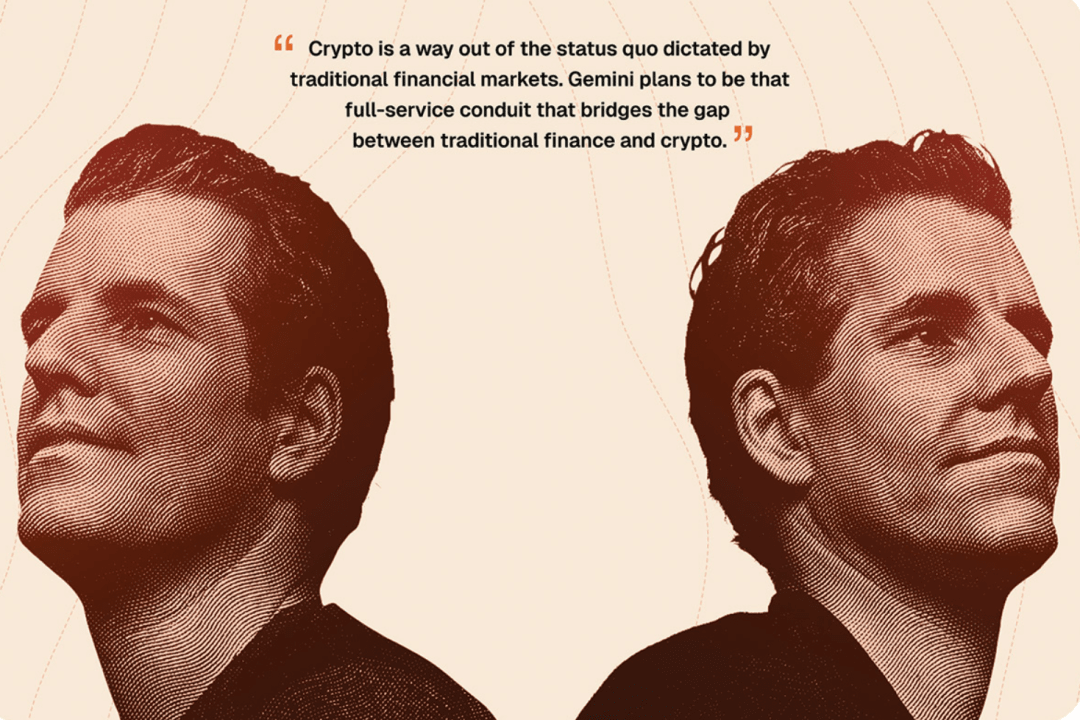
Gemini stated that the proceeds from its IPO will be used for general corporate purposes and to repay all or part of third-party debts.
First half revenue of $68.61 million, net loss of $282 million
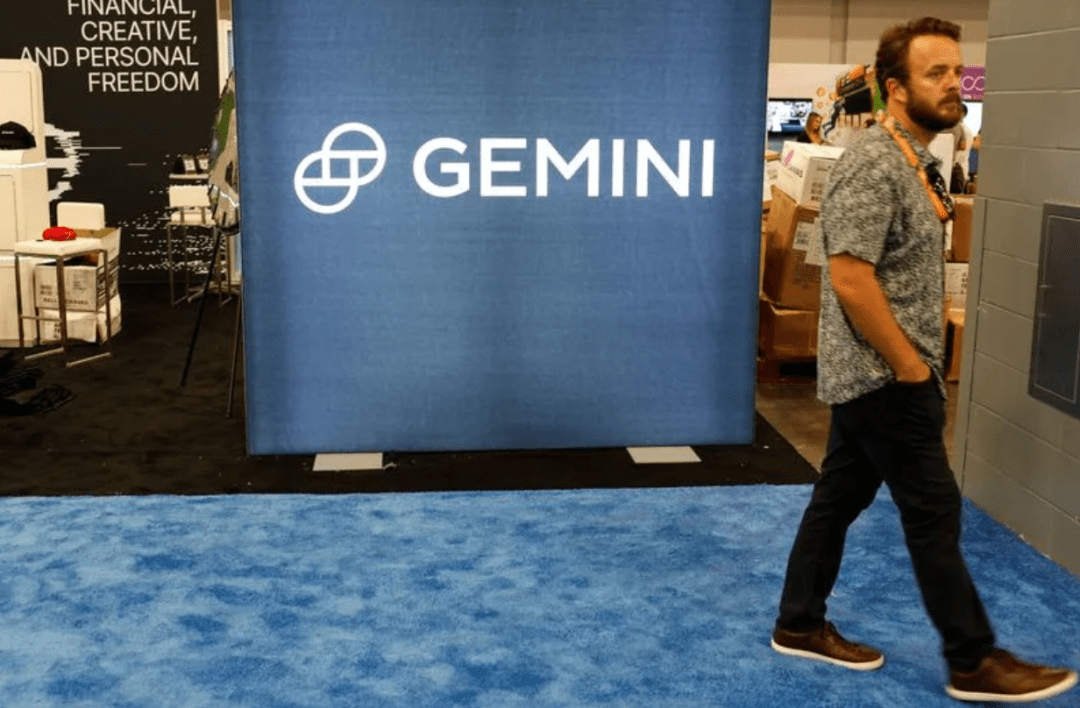
Gemini was founded in 2014 by billionaire twin brothers Tyler Winklevoss and Cameron Winklevoss, who gained fame for suing Facebook and its CEO Mark Zuckerberg for stealing their social network idea.
In 2008, they reached a settlement with Facebook in cash and stock.

Gemini issues the Gemini Dollar (GUSD), a stablecoin pegged to the US dollar at 1:1. Gemini also supports over 70 cryptocurrencies, with operations in over 60 countries/regions. As of June 30, 2025, Gemini served approximately 523,000 MTUs and about 10,000 institutions in over 60 countries, with platform assets exceeding $18 billion, total trading volume over $285 billion, and transfer amounts processed exceeding $800 billion.
Since its establishment, with users exploring the on-chain world, Gemini has witnessed the overall market value of cryptocurrencies grow from less than $10 billion to over $3 trillion.
The prospectus shows that Gemini's revenues for 2023 and 2024 are projected to be $98.14 million and $142 million, respectively; operating losses are projected to be $312 million and $166 million, respectively; net losses are projected to be $320 million and $159 million, respectively.

Gemini's revenue for the first half of 2025 was $68.61 million, down 7.6% from $74.23 million in the same period last year; it had an operating loss of $113 million, compared to an operating loss of $84.8 million in the same period last year; the net loss was $282 million, compared to a net loss of $41.37 million in the same period last year.

Gemini's Adjusted EBITDA for the first half of 2025 was -$113 million, compared to $32.04 million in the same period last year.
The Winklevoss brothers once participated in the Olympics
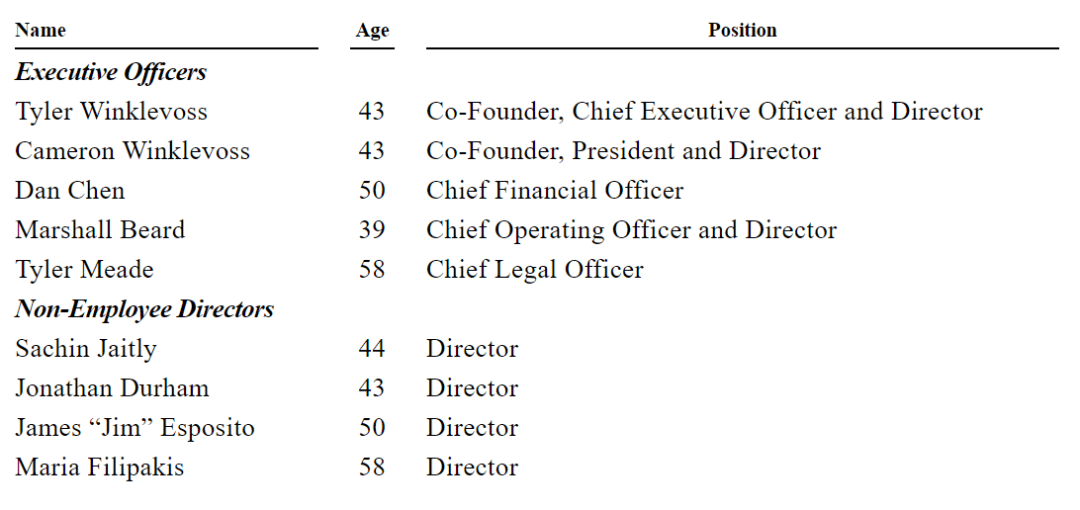
Gemini's co-founders are brothers Tyler Winklevoss and Cameron Winklevoss, with Dan Chen as CFO.
The CTO is Marshall Beard, and the Chief Legal Officer is Tyler Meade.
Tyler Winklevoss and Cameron Winklevoss are the company's actual controllers. The brothers were inseparable; after being admitted to Harvard, they always attended classes, ate, and exercised together.
The two brothers are always 'tied' together, and the outside world gradually refers to them as the Winklevoss brothers. Initially, the Winklevoss brothers had a vision to design a social networking site for Harvard students called HarvardConnection, and even hired Facebook founder Mark Zuckerberg to help with programming. However, the two brothers later fell out with Zuckerberg, accusing him of stealing their idea to create Facebook. In 2012, they obtained cash and stock compensation through a lawsuit amounting to $65 million, of which $20 million was cash, and the rest was paid in stock.
In 2012, the Winklevoss brothers began accumulating bitcoins with part of the compensation from Facebook, purchasing about 120,000 bitcoins at a price of less than $10 each. They co-founded Gemini in 2014.
The Winklevoss brothers are not only exceptionally smart in the tech field but are also athletic; they participated in the men's double sculls event at the 2008 Beijing Olympics and finished sixth.
Circle and Bullish were successively listed on the US stock market
Silicon Valley investment tycoon and billionaire Peter Thiel supported the cryptocurrency exchange operator Bullish (stock code: BLSH), which went public on the New York Stock Exchange last week.
Bullish's offering price was $37, significantly higher than the previous offering range of $28 to $31. Bullish's offering size was expanded to 30 million shares, raising a total of $1.111 billion.
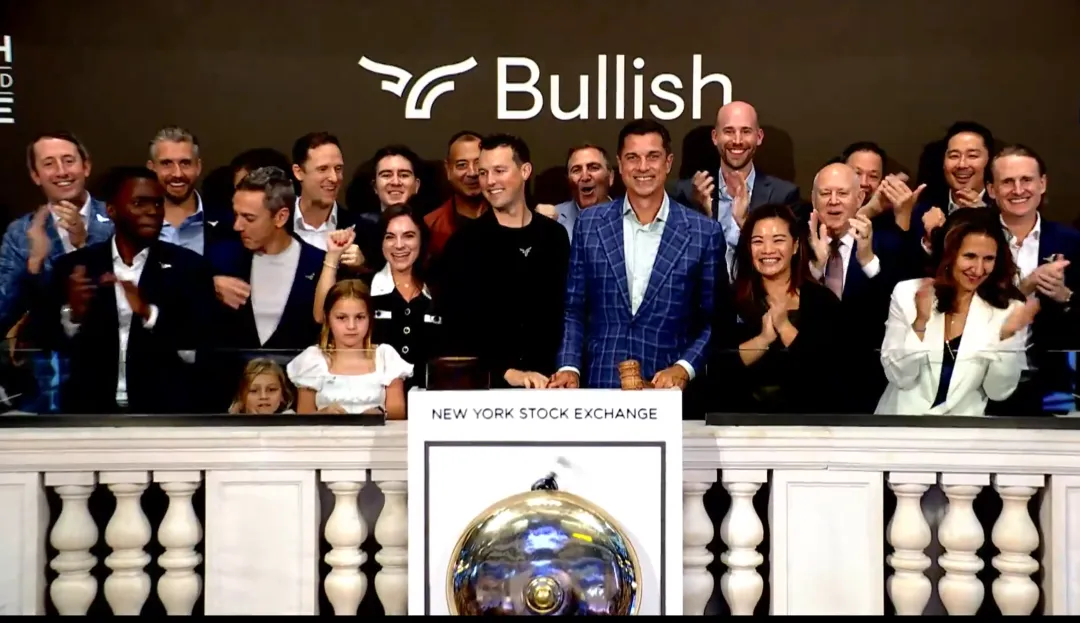
Bullish opened at $90, rising 143% from the offering price; it peaked at $118 during the day, up 219% from the offering price; the closing price was $68, up 84% from the offering price. Based on the closing price, the company's market value was $9.94 billion. As of Friday's close, Bullish's market value was $10.2 billion.
The chairman and CEO of Bullish is Thomas W. Farley, who was formerly the president of the New York Stock Exchange. Bullish stated in its filings that it holds over $3 billion in liquid assets, including 24,000 bitcoins, 12,600 ethers, and over $418 million in cash and stablecoins.
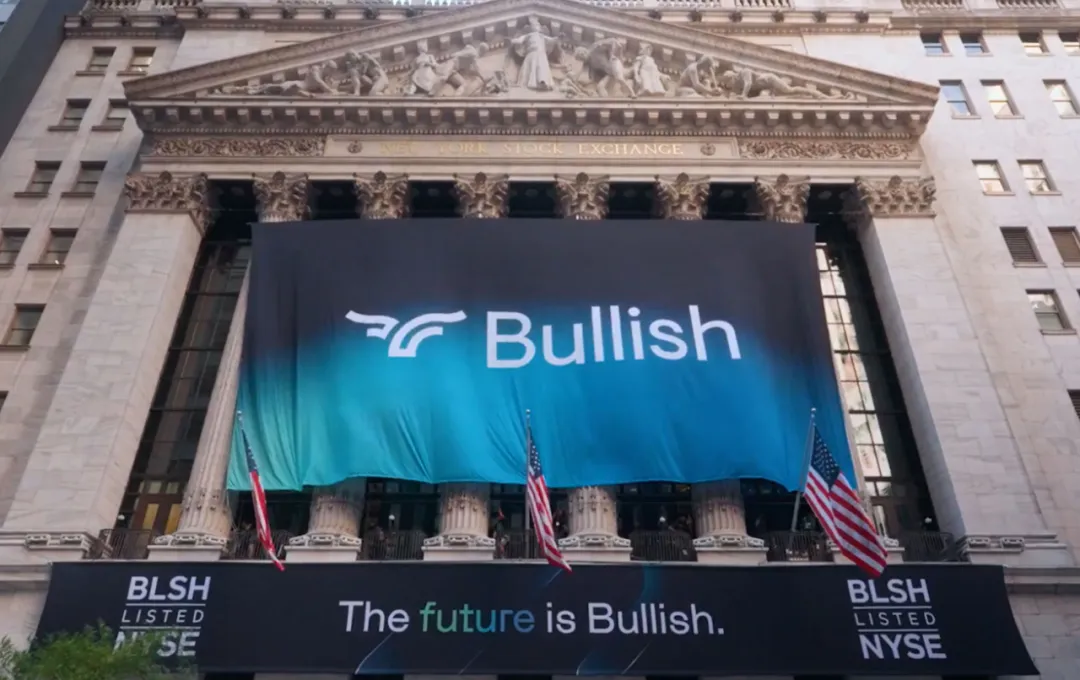
Earlier, USDC stablecoin issuer Circle went public on the New York Stock Exchange, issuing a total of 34 million shares and raising a total of $1.054 billion; of this, Circle sold 14.8 million shares in this IPO, raising $459 million; existing shareholders, including the CEO, sold 19.2 million shares, cashing out nearly $600 million.
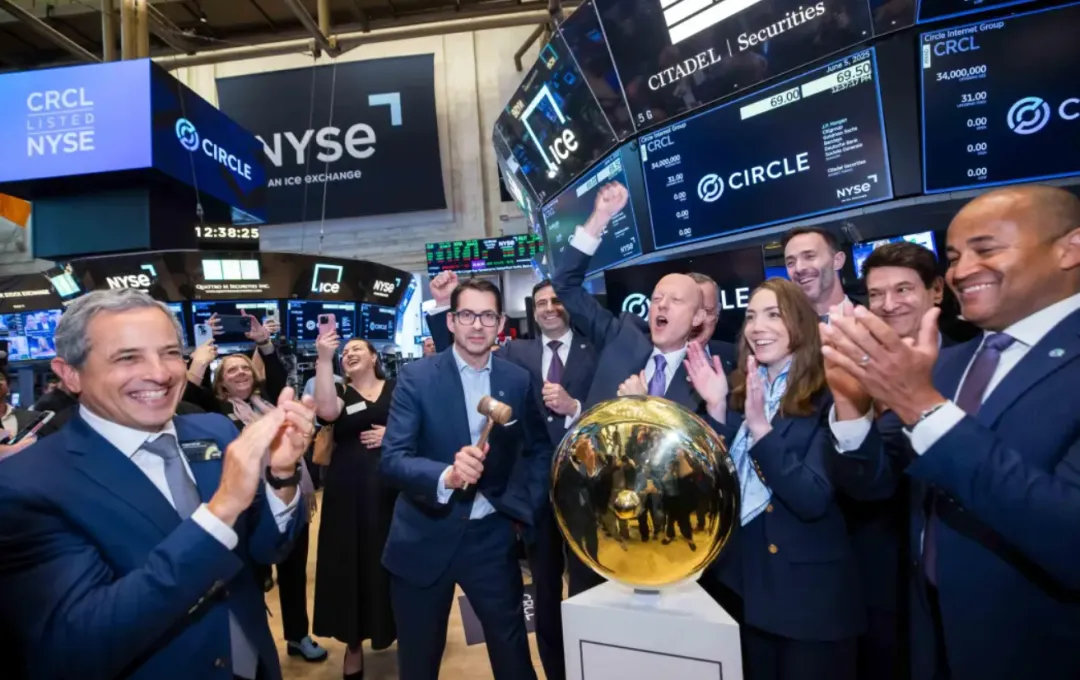
According to the financial report, Circle's total revenue and reserve income for the first half of 2025 was $1.237 billion, compared to $795 million in the same period last year; the net loss was $417 million, compared to $8.156 billion in the same period last year.
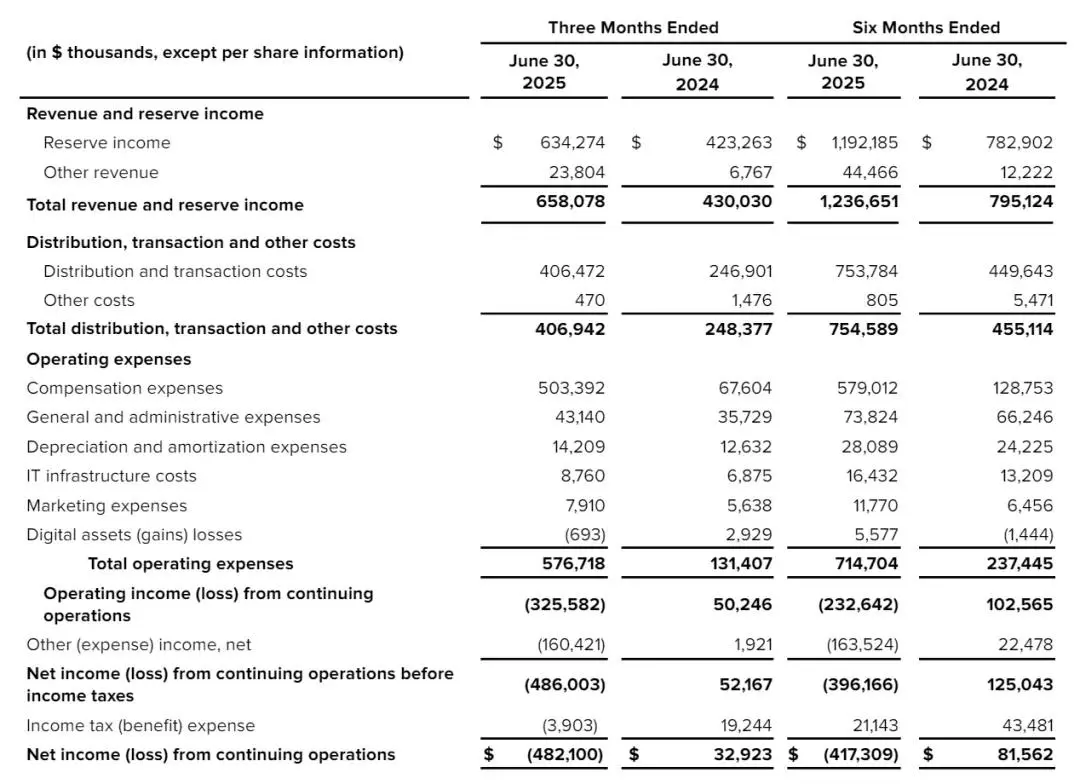
Circle's revenue for the second quarter of 2025 was total revenue and reserve income of $658 million, up 53% from $430 million in the same period last year.
Circle's net loss from continuing operations for the second quarter of 2025 was -$482 million, compared to $32.92 million in the same period last year. Circle's losses were mainly affected by large IPO expenses, totaling $591 million: of which $424 million was related to stock compensation for meeting IPO vesting conditions. Due to the rise in stock prices, the fair value of Circle's convertible bonds increased by $167 million.
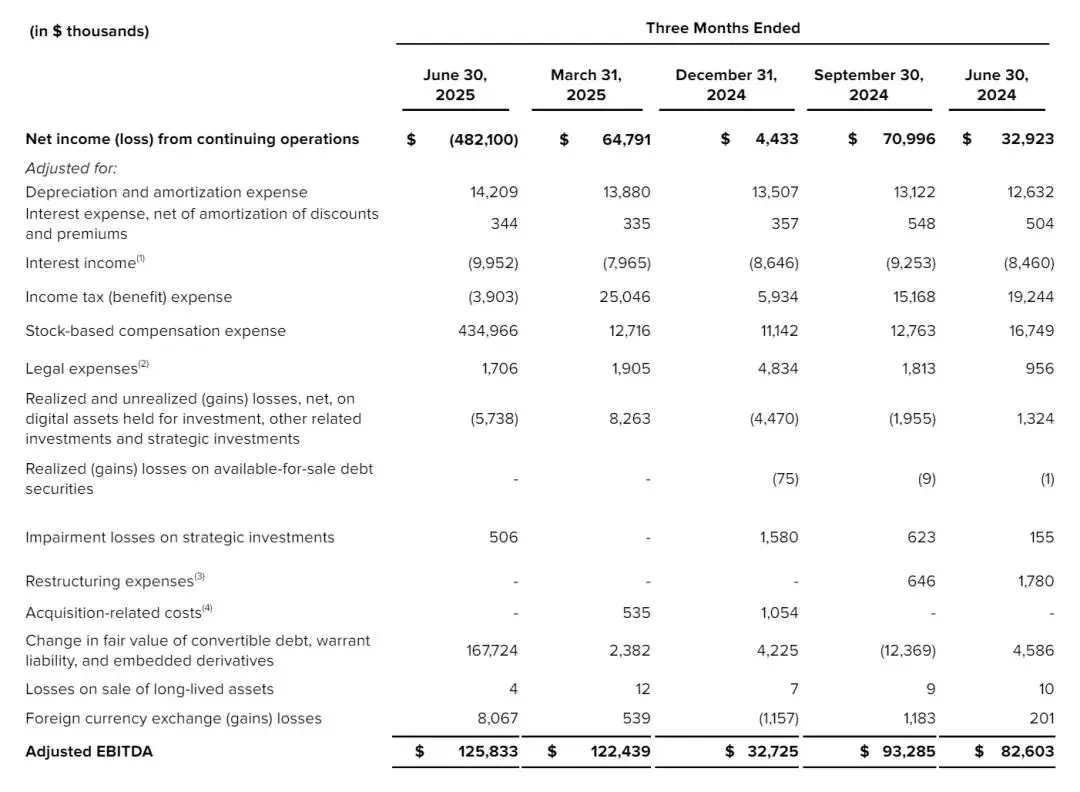
Circle's Adjusted EBITDA for the second quarter of 2025 was $126 million, up 52% from $82.6 million in the same period last year; the Adjusted EBITDA margin was 40%.
As of June 30, 2025, the circulation of USDC grew 90% year-on-year to $61.3 billion; as of August 10, 2025, the USDC circulation increased by another 6.4% to $65.2 billion.
Original link

